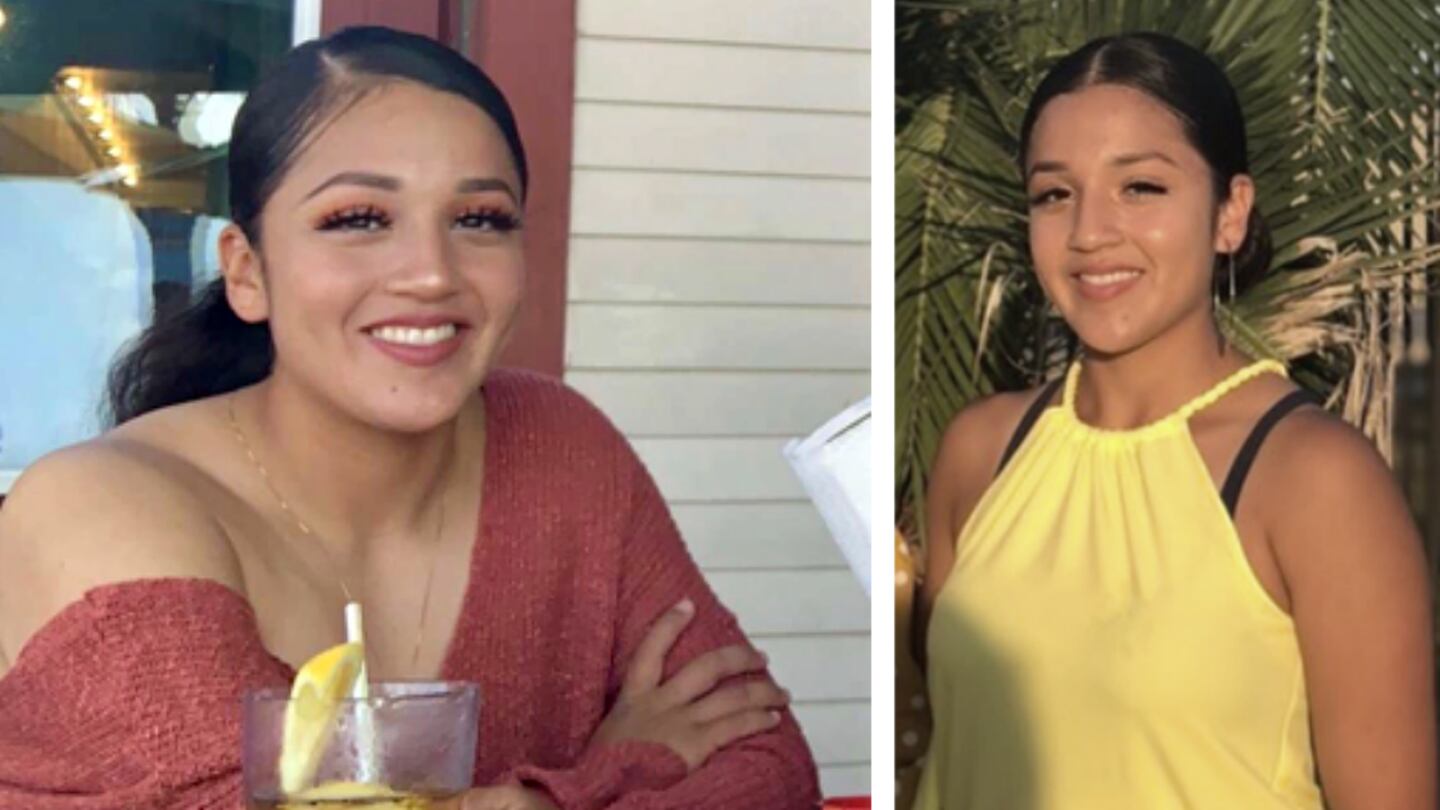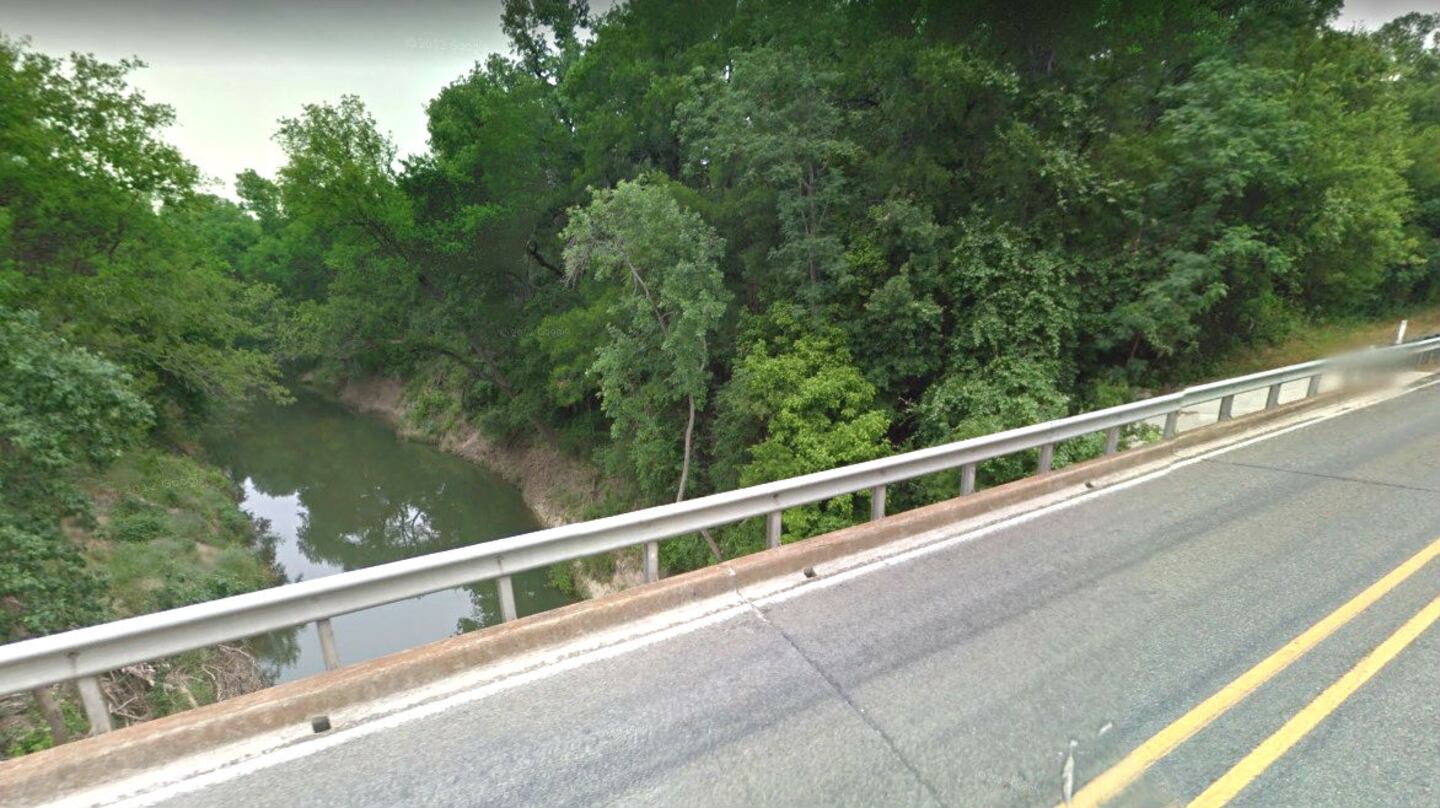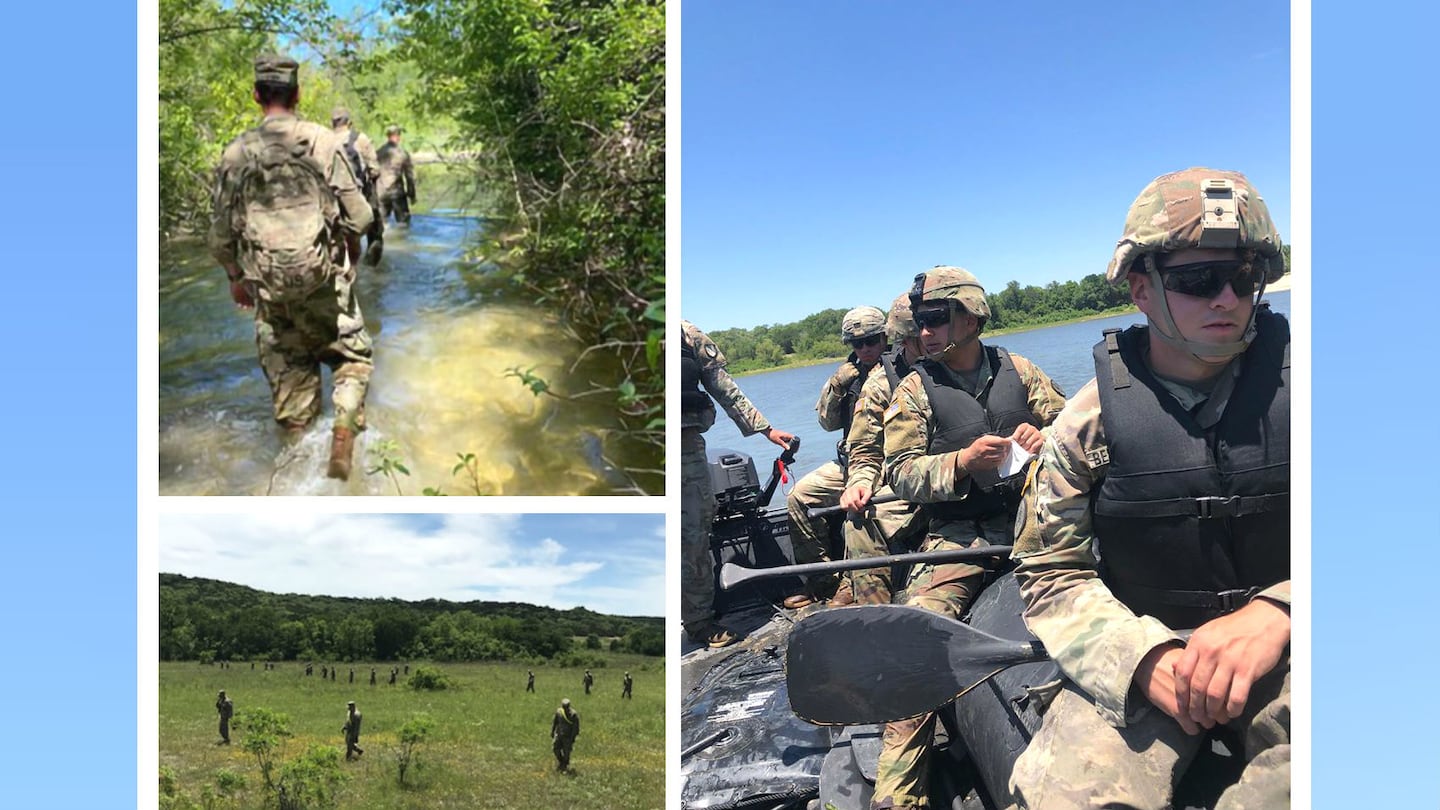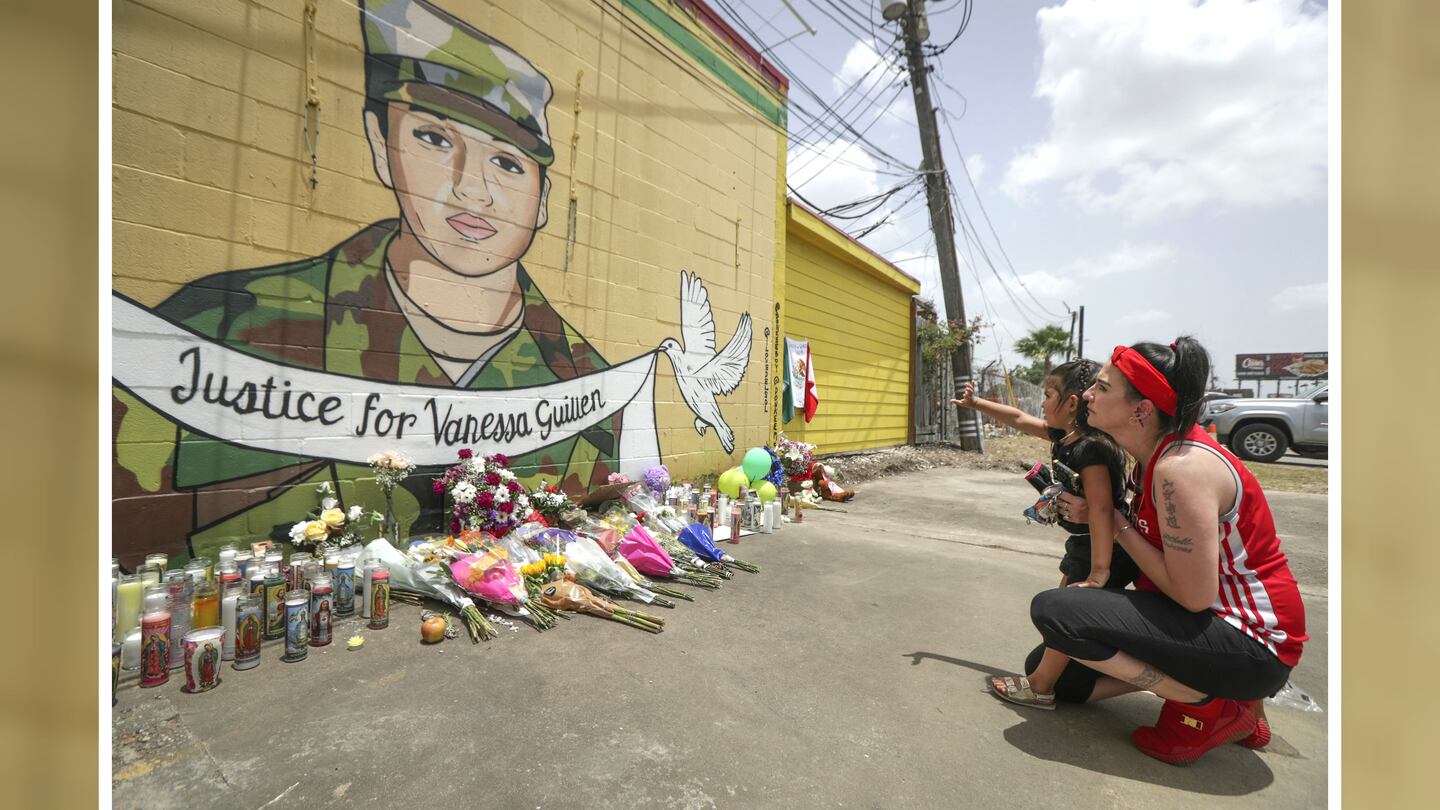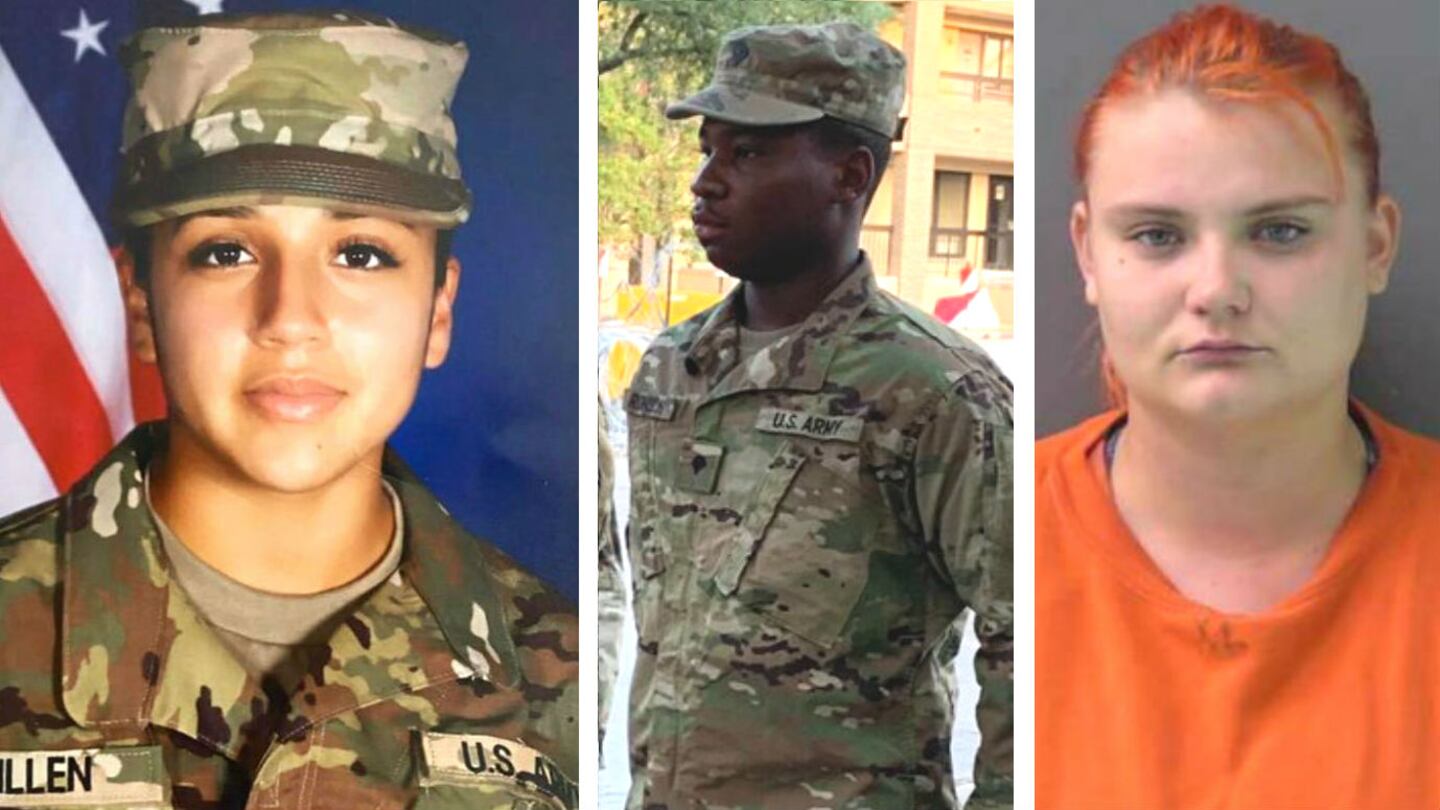FORT HOOD, Texas — A federal affidavit details the gruesome killing and dismemberment of Army SPC Vanessa Guillen, a Fort Hood soldier who vanished in April only to be found buried in multiple shallow graves about 30 miles from the Texas base last week.
Searchers found the 20-year-old Guillen’s dismembered remains encased in concrete and buried in multiple spots in Belton, along the Leon River.
Cecily Anne Aguilar, 22, of Killeen, is charged with conspiracy to tamper with evidence, according to the U.S. Attorney for the Western District of Texas. Aguilar is accused of helping her boyfriend, SPC Aaron David Robinson, dispose of Guillen’s body along the Leon River in Belton, Texas.
If convicted, Aguilar faces up to 20 years in federal prison and a fine of up to $250,000. A preliminary hearing in her case has been scheduled for July 14 in Waco, court records show.
A U.S. magistrate judge on Monday ordered Aguilar held in the custody of U.S. marshals until that hearing. According to ABC 13 reporter Steve Campion, when asked if she understood the charge against her, Aguilar replied, “Yeah, yeah, sure.”
"Yeah, Yeah, Sure" 🚨 Cecily Aguilar appeared via video inside a federal court just moments ago in Waco, Texas. She said ...
Posted by ABC13-Steve Campion on Monday, July 6, 2020
Robinson, 20, shot and killed himself in front of U.S. Marshals and Killeen police officers Wednesday as they approached him for questioning.
Guillen’s disappearance gained national attention after celebrities including Salma Hayek called attention to her plight. Allegations from her family and their attorney that Guillen had suffered sexual harassment at Fort Hood prior to her abduction threw an additional spotlight on the case.
Fort Hood officials said at a Thursday news conference that investigators had been unable to corroborate those claims. A separate probe into the implementation of the base’s Sexual Harassment/Assault Response and Prevention program, or SHARP, is ongoing.
Major Gen. Scott Efflandt, III Corps deputy commanding general, said the investigation also includes an assessment of “whether the command climate is supportive of soldiers reporting incidents of sexual harassment and sexual assault” and the identification of any systemic issues with the SHARP program.
Guillen’s family on Sunday told multiple media outlets, including The Washington Post, that the remains found earlier in the week had been positively identified as belonging to Guillen. The family’s attorney, Natalie Khawam, said the remains included bones, hair and other pieces of the young woman’s body.
The remains were identified Friday but the family waited until Sunday to tell Guillen’s mother, Gloria Guillen. They wanted a priest and Army chaplain on hand when they told her, the Post reported.
“She did feel Vanessa was no longer with us,” Guillen’s sister, Mayra Guillen, told the paper by phone from Houston. “She had a hard time accepting there isn’t a whole body.”
A criminal complaint filed Thursday against Aguilar charges that she conspired with Robinson from about April 23, the day after Guillen was last seen alive on Fort Hood, to June 30 to “corruptly alter, destroy, mutilate and conceal an object” with the intent to “impair its integrity and availability for use” in official proceedings.
The affidavit in the case, written by FBI special Agent Jonathan Varga, details how the alleged crime took place. It also confirms details released last week by Natalie Khawam, an attorney representing Guillen’s family.
Army officials previously said Guillen, a small arms and artillery repairer for the 3rd Cavalry Regiment, was last seen April 22 in the parking lot of the Regimental Engineer Squadron Headquarters on Fort Hood.
“Her car keys, barracks room key, identification card and wallet were later found in the armory room where she was working earlier in the day,” a CID news release said. “She was last seen wearing a black T-shirt and purple fitness-type pants.”
According to Varga’s affidavit, a witness told investigators from the U.S. Army Criminal Investigative Command, or CID, that Guillen had left the arms room where she was working to go to a separate arms room to confirm serial numbers for weapons and equipment on which she was working.
Robinson was in charge of the arms room to which she was going, the affidavit said.
Guillen never returned to her workspace, leaving her belongings behind. The witness told investigators her wallet, ID and keys remained there when he locked up for the day, according to the court document.
Cellphone records and a ‘tough box’
The affidavit describes Guillen as a private first class, the rank she held when she died. She was posthumously promoted to specialist Wednesday because, at that point, she had met time-in-service and time-in-grade requirements to be promoted a rank.
“A search of PFC Guillen’s phone records revealed the last outgoing text message from her phone was a message to SPC Robinson’s phone,” Varga wrote in the affidavit. “SPC Robinson was one of the last people known to have seen PFC Guillen.”
Robinson told investigators the contact involved the serial numbers for the equipment Guillen was working on. He claimed he gave her paperwork and the serial number of a .50 caliber machine gun which needed to be serviced.
“He said she left the arms room and he believed she would have next gone to the motor pool,” the affidavit states. “Witnesses at the motor pool prepared to receive the paperwork from PFC Guillen stated she did not arrive with the papers.”
Read the entire federal affidavit below. Warning: The document contains graphic details.
Cecily Aguilar Criminal Complaint by National Content Desk on Scribd
When interviewed by CID agents April 28 regarding Guillen’s disappearance, Robinson told them he went home from work the day of her abduction. He lived off-post with Aguilar, who authorities have described as the estranged wife of a former Fort Hood soldier.
Robinson said he remained home the rest of the evening except a brief trip to the base around 6:30 p.m. to use a government computer to sign up for some training, the affidavit states.
On May 18, nearly a month after Guillen had vanished, two witnesses came forward to say they saw Robinson on the base the night of April 22.
“They observed SPC Robinson pulling a large ‘tough box,’ with wheels, that appeared very heavy in weight, coming out the arms room, the same room where SPC Robinson worked,” the affidavit states. “The two witnesses observed SPC Robinson load the ‘tough box’ into his vehicle and drive away.”
Tim Miller, head of search and rescue group Texas EquuSearch, said last week that the lid of a heavy-duty plastic Pelican brand case had been found in a burn pit near the site of Guillen’s remains. The lid was the only portion of the case that had not burned, Miller told Crime Stories with Nancy Grace.
Listen to Miller discuss the case below.
The day after the witnesses came forward, Robinson consented to a search of his cellphone, Varga wrote.
“A review of the phone call logs revealed SPC Robinson called Aguilar multiple times during the night of April 22, and as late as 3:30 a.m. on April 23,” the affidavit states. “SPC Robinson also received calls from Aguilar throughout the day.”
Aguilar, who was questioned June 19, told CID agents Robinson was home with her all night on April 22.
“She was asked why SPC Robinson would call her after midnight if he was at the residence with her,” according to the court document. “She stated she could not find her phone and had SPC Robinson call the phone to help her find it.”
“This statement, however, is inconsistent with the lengths of the calls. SPC Robinson called Aguilar several times throughout the night and the calls after midnight were for lengths greater than one minute.”
When interviewed a second time, Aguilar admitted lying to the investigators. She claimed she left home because “one of the ways she copes is by taking long drives,” the affidavit states. She told agents she and Robinson took a drive to a park in Belton to “look at the stars.”
After the park, they went home, Aguilar said.
The affidavit states that an analysis of the location data on Robinson’s phone told a different story.
“A review of the location data revealed that at approximately 1:59 a.m. April 22, SPC Robinson’s cellphone was identified in the vicinity of FM 436 and West Main Street in Belton, Texas, specifically on or around a bridge,” Varga wrote. “SPC Robinson’s cell phone then tracked along the Leon River in a ‘northward direction.’”
Robinson’s cellphone showed he was in that area along the river for about two hours.
Aguilar’s cellphone location data showed she and Robinson were both near the Leon River on April 23 and again on April 26, the document states.
She ‘never made it out of the Army alive’
Based on the cellphone data, CID agents, Texas Rangers and deputies from the Bell County Sheriff’s Office began searching the area along the river on June 21.
“A burn site with disturbed earth was identified,” Varga wrote. “What appeared to be the burned remains of a plastic tote or tough box were found nearby in an area near where SPC Robinson’s phone pinged.
“The soil beneath the burn site was remarkably softer and moister than the soil found at similar depths merely feet away and had an odor of decomposition. However, no remain were located.”
Contractors working on a fence near the river last Tuesday afternoon called CID officials to report they had found human remains, the affidavit states.
Federal agents, including the FBI, went to the spot and found “scattered human remains that appeared to have been placed into a concrete-like substance and buried,” Varga wrote.
Aguilar was questioned again following the grim discovery, at which point she admitted that Robinson had confessed to killing a female soldier April 22. He told her that he struck the woman multiple times with a hammer inside the arms room where he worked.
“Aguilar advised the female soldier never made it out of the Army alive (referring to Fort Hood),” the affidavit states. “SPC Robinson then placed her in a box and moved the box to a location near the Leon River in Belton.”
According to Aguilar’s statement to authorities, Robinson on April 22 or early April 23 picked her up at the gas station where she worked and took her to the site on the Leon River, near the bridge at which his cellphone had pinged.
“A box with wheels and handles was already at this site,” Varga wrote. “SPC Robinson walked Aguilar over to the woods and opened up a box for Aguilar, and she saw a dead female inside the box.
“Aguilar, on a later date, identified the dead female as Vanessa Guillen.”
Aguilar told investigators she and Robinson used a machete and a hatchet or ax to cut up Guillen’s body so it would be easier to dispose of.
“They removed the limbs and the head from the body,” according to the court document. “SPC Robinson and Aguilar attempted to burn the body; however, the body would not burn completely. They placed the dead female in three separate holes and covered up the remains.”
The couple left the site but, unsatisfied, returned on April 26. They arrived prepared with gloves, hairnets and a bag of concrete Aguilar had bought from someone using Facebook Messenger.
“On that date, SPC Robinson and Aguilar uncovered the remains of (Guillen), removed them and continued the process of breaking down the remains of the dead female,” the affidavit states. “The remains were then burned again along with their gloves and hairnets. SPC Robinson and Aguilar placed the remains back in the three holes with the concrete purchased earlier.”
When the couple returned home, they burned the clothes they were wearing, Aguilar told investigators.
‘Baby, they found pieces’
Varga wrote in the affidavit that Robinson had been confined to his barracks room on Fort Hood prior to Tuesday night, when he fled the post.
Aguilar, now working with CID agents, placed a “controlled” phone call to Robinson in which he never denied anything they did to Guillen, the FBI agent wrote.
When the news broke that partial human remains had been found alongside the Leon River, Robinson texted Aguilar photos of the news stories.
“In a later controlled telephone call, SPC Robinson advised, ‘Baby they found pieces, they found pieces,’” according to the affidavit. “This was referring to the human remains recovered near the Leon River.”
Varga wrote that Aguilar helped investigators locate Robinson, who was on foot in Killeen.
Killeen police Chief Charles Kimble said Wednesday that CID investigators contacted Killeen detectives and the U.S. Marshals Lone Star Fugitive Task Force late Tuesday evening about Robinson.
“The suspect was located walking in the 4700 block of East Rancier Avenue,” the chief said. “As officers attempted to make contact with the suspect, he produced a weapon and committed suicide by shooting himself.”
Robinson was pronounced dead at the scene.
Robinson, who was a native of Calumet City, Illinois, had been in the Army since October 2017. Like Guillen, he was part of the 3rd Cavalry Regiment at Fort Hood.
According to base officials, he worked in the building next to one in which Guillen was assigned.
Mayra Guillen said Wednesday that she had met and spoken to Robinson when she visited the base during the search for her sister. She said her instincts told her he was involved.
“I wasn’t wrong, apparently. He still had the nerve, that same day, to laugh in my face,” Mayra Guillen said, her voice quivering as she fought back tears. “And now he kills himself.
“Why, I don’t know. But whoever’s responsible has to pay.”
Cox Media Group

